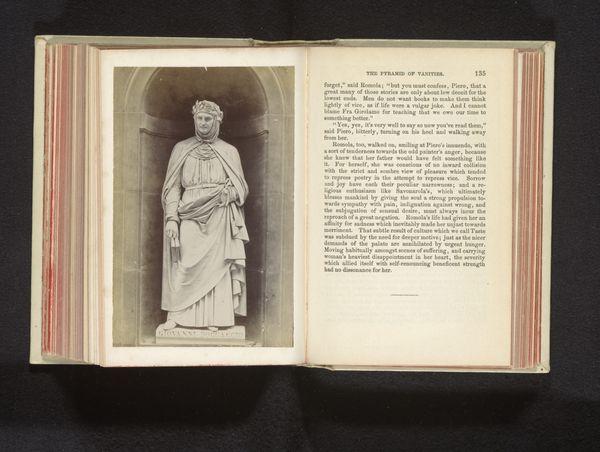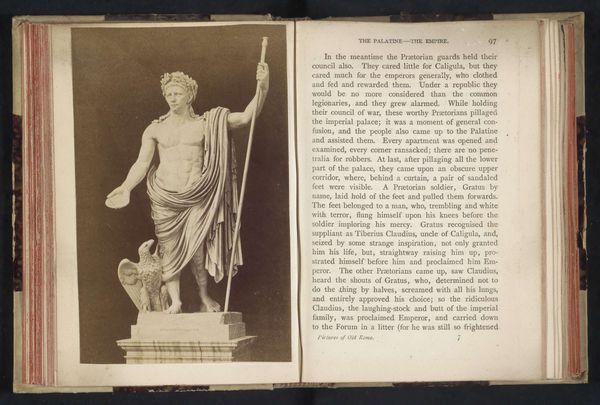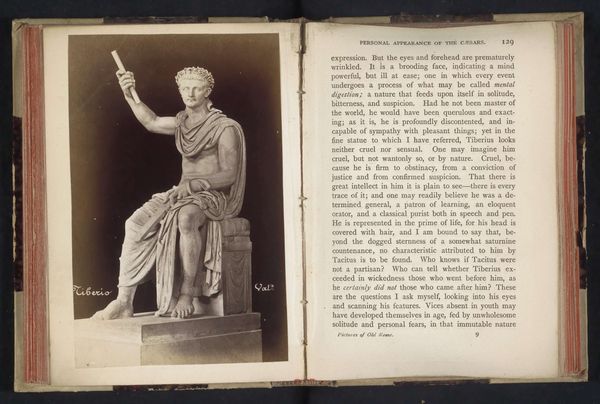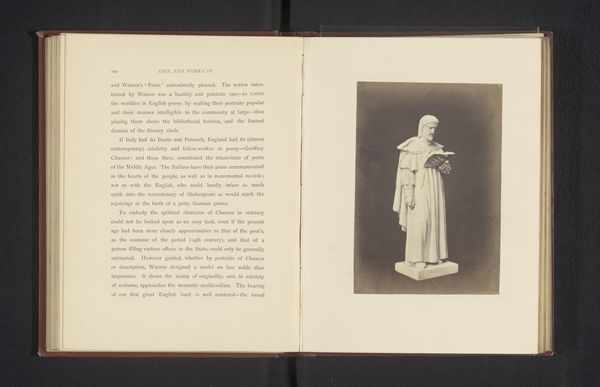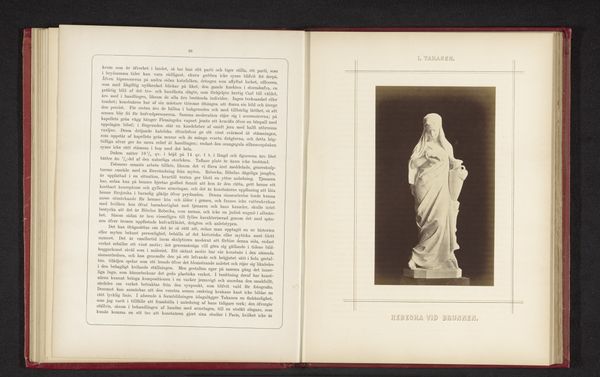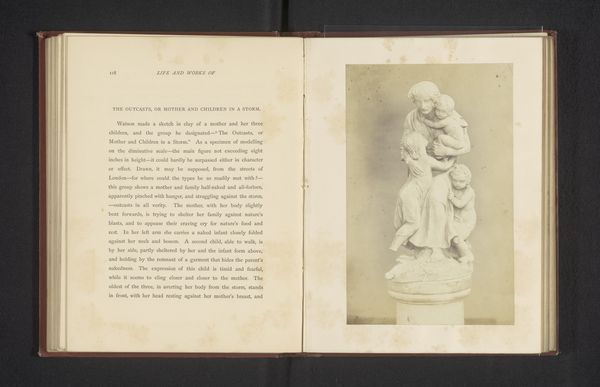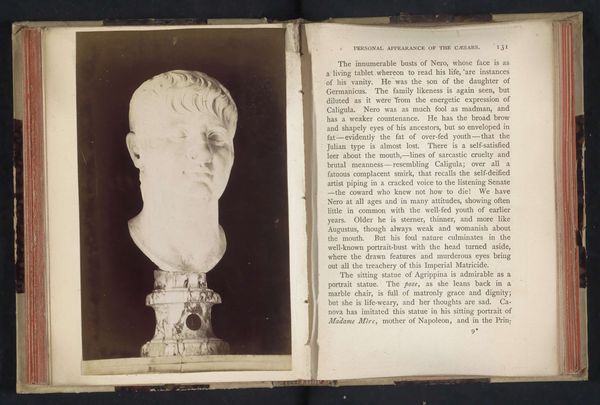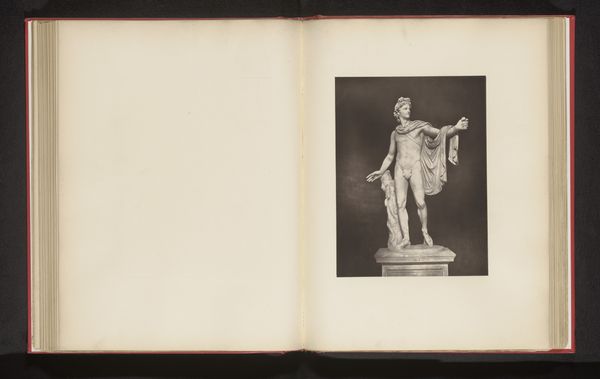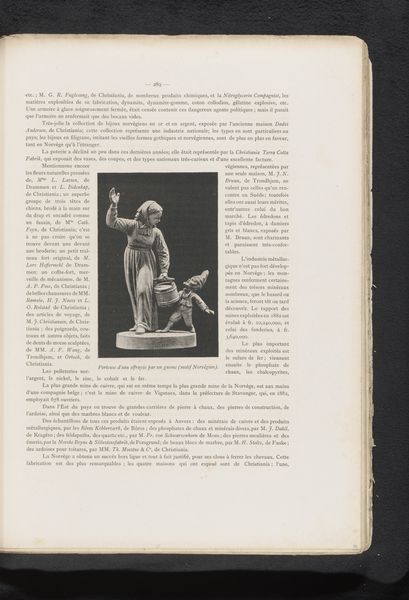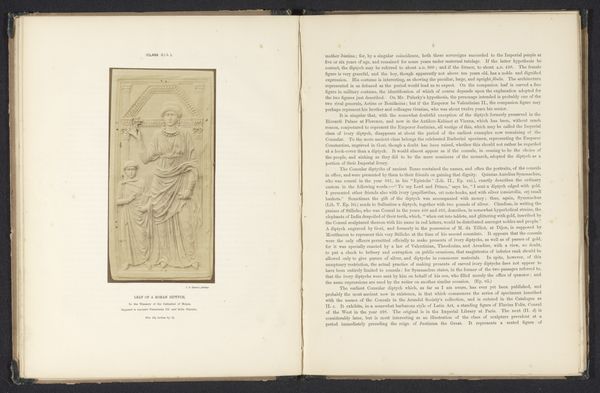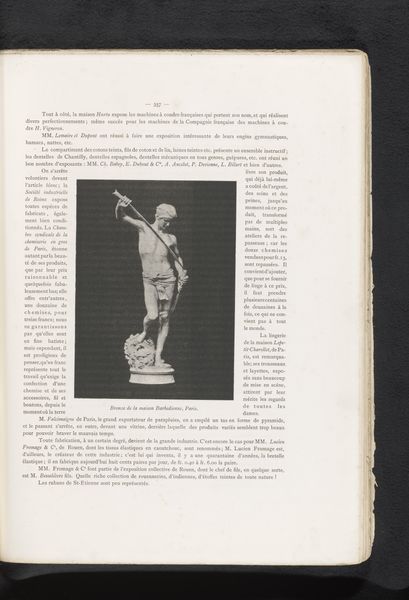
print, photography, sculpture
#
portrait
# print
#
greek-and-roman-art
#
photography
#
coloured pencil
#
ancient-mediterranean
#
sculpture
Dimensions: height 146 mm, width 92 mm
Copyright: Rijks Museum: Open Domain
Curator: Looking at this open book featuring a photographic print of a sculpture, presumably Nerva from the Vatican Museums, what strikes you first? Editor: Well, it's interesting seeing a sculpture presented this way, almost like an artifact within a historical document. The juxtaposition of text and image is really striking. What can you tell me about this type of documentation? Curator: Consider the means of reproduction. This isn’t a direct encounter with the sculpture. It's mediated through photography, then print. Think about the labor involved. The photographer, the printer, the binder—each plays a role in how we perceive this Nerva. This image exists as part of a larger economy of knowledge, aimed at circulating visual and historical narratives about power. How does that frame your interpretation? Editor: So, it’s not just about appreciating the artistry of the sculpture itself, but also about the context in which this image was produced and consumed. The fact that it’s in a book titled "Pictures of Old Rome" suggests it's part of a larger project of cataloging and disseminating classical heritage. I am also curious about the use of photographic prints within the book - I'm assuming this was a complex means of producing this book and circulating information! Curator: Exactly! Consider the power structures involved. Who had access to these books? What narratives were they reinforcing through the selective presentation of "Old Rome"? Thinking about materials and the means of distribution lets us understand how the statue was used and perhaps also changed. Editor: It makes me rethink how even seemingly straightforward images are embedded within layers of material production and social context. So, we are less interpreting a work of art, and more considering what the existence and format tells us about the circulation of the object through society. Thank you! Curator: Indeed, seeing the sculpture within its book object prompts an investigation of how this knowledge was created, distributed, and ultimately consumed, altering it over time.
Comments
No comments
Be the first to comment and join the conversation on the ultimate creative platform.
